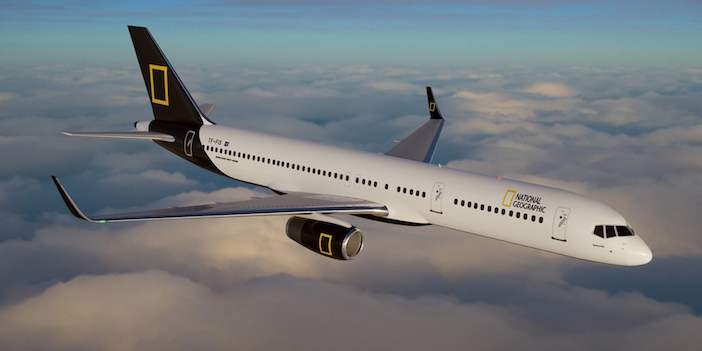Sometimes challenges arise, which can put even the most carefully planned journeys on hold. This was the case for a National Geographic ‘Around the World by Private Jet’ tour’ aboard a Boeing 757-200 aircraft (registered TF-LLL), chartered from Loftleidir-Icelandic (a member of Icelandair Group). Unfortunately a tail strike event on 10th November, 2023 forced an unscheduled pause in operations.
Following the incident, TF-LLL was taken to Madrid for required structural repairs, and Icelandair promptly dispatched a Boeing 767-300ER to take over the immediate needs of the global journey before a replacement B757 was brought into service.
However, the damaged B757 had been customised to accommodate 75 VIP-style leather seats in a 2×2 configuration, according to the luxury travel agency. Thus, in order to maintain the standard of luxury, Loftleidir-Icelandic identified the need for the VIP seats and certain interior elements from TF-LLL, to be transferred into another B757 in Iceland, designated to continue the round-the-world tour flights. Two aviation companies, namely AIRE (an aircraft interiors engineering, MRO and production specialist) and Servitec (a line maintenance and end-of-life solutions specialist), were brought in to expedite the cabin work.
TF-LLL landed in Madrid right after the 2024 new year where, despite the festive season, AIRE and Servitec operations continued without interruption. Thanks to the collaborative effort, and as a benefit of both companies being subsidiaries of Aviaction, AIRE and Servitec found a solution in just one week.
This challenging project required AIRE’s specialised team of technicians to remove the seats and closets, almost emptying the overall cabin, in just two days. These components were then transported to AIRE’s warehouse in Madrid, where they underwent rigorous inspection/checks in accordance with seat CMMs, and the relevant EASA Form 1 was issued so they could be re-installed promptly on the selected aircraft.
AIRE’s logistics team then packed all the components for shipment to Iceland, where they would be fitted. In the meantime, during the time since the aircraft had landed in Madrid, Servitec had been responsible for ensuring the aircraft’s airworthiness, with its activities including signing relevant WOs for cabin emptying and the aircraft’s certification for release to service (CRS), before the aircraft was taken to the hangar for relevant repairs. The incident, which initially posed a threat to the round the world tour, ultimately showcased the resilience and expertise of aerospace engineering, which ensured the expedition continued its journey.





